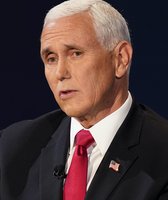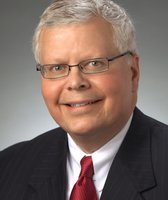Stand up for the facts!
Our only agenda is to publish the truth so you can be an informed participant in democracy.
We need your help.
I would like to contribute

This picture was posted to Facebook during Trump's AMA.
Donald Trump exaggerates youth unemployment in Reddit AMA
In Donald Trump’s Ask Me Anything (AMA) on the web-forum Reddit, the Republican presidential nominee was asked what he thought was the most important issue facing American young people.
"The question most young people ask me is about the rising cost of education, terrible student debt and total lack of jobs. Youth unemployment is through the roof, and millions more are underemployed. It's a total disaster!" Trump wrote.
Among the concerns Trump addressed in this answer, his assertion about youth unemployment stood out. If true, it would mean that youth employment was bucking the downward trend of the overall unemployment rate since 2010.
To get a sense of whether youth unemployment is unusually high, we looked at a couple of questions. Is youth unemployment in the United States rising? Is it high historically? Is it high compared with other wealthy countries? The answer to each of these questions, we found, is no.
A note on measures of unemployment: As we’ve explained before, there are different ways to look at the unemployment figures put out by the Bureau of Labor Statistics. The most commonly quoted figure measures people who cannot find work as a percentage of the labor force. This does not include people not looking for work, including retired people, many students, stay-at-home parents and people too discouraged to look for work.
Sign up for PolitiFact texts
We’ll mostly look at this headline number, but other broader measures of the unemployment generally map onto the trends we’ll outline, according to Tara Sinclair, associate professor of economics at the George Washington University and chief economist for the job site Indeed. We’ll try to use apples-to-apples comparisons to get a sense of whether the U.S. rate is unusually high.
The Bureau of Labor Statistics is the government agency that tracks the unemployment rate. It gets its numbers from a Census Bureau survey of 60,000 households. The numbers we’ll be using are then adjusted to take into account seasonal hiring.
The unemployment rate for June for people 16 to 24 is a little more than twice as high as the overall unemployment rate. This is not unusual historically, Sinclair said.
Young people typically take longer when looking for work than people with more experience, and a person looking for their first job will always be counted as unemployed while people who look for a new job while still working will not, to give two possible explanations. To determine whether today’s youth unemployment rate stands out, we need to compare it with youth unemployment rates in other times and places.
The unemployment rate for people 16 to 24 peaked at 19.5 percent in April of 2010. In June of this year, the rate was a little more than half that—10.7 percent. The number fluctuates from month to month, but has trended downwards for years.
The unemployment rates for people 16 to 24 have not yet reached its low from the mid 2000s. But it is close—less than one percent higher. The current rate is lower than some pre-crisis months between 2006 and 2008.
The Bureau of Labor Statistics has collected youth unemployment data since 1948. The current rate is below the average for that whole period, and below the average rates for each of the last four decades.
Data released by the International Labor Organization allows us to compare youth unemployment across countries. In 2014, the U.S. unemployment rate they reported for people 15 to 24 was essentially identical to their international rate. It was higher than the rate in Germany and Canada but lower than the rate in the United Kingdom and the overall rate for other high income countries and the European Union. The worst-off high income countries—Spain and Greece, each dealing with budget crises—have youth unemployment rates almost four times as high as the United States. France’s is twice as high.
Featured Fact-check
Youth unemployment affects the population unequally, and the rates for African-Americans and Hispanics are higher than the rate for the population as a whole. We looked at this disparity when Trump inflated the black youth unemployment rate in June.
There are other ways of looking at the labor market for young people—other than unemployment—that are less positive. The labor force participation rate, which measures the portion of the population that is working or looking for work, fell during the recession and flat-lined during the recovery. The ratio of employed people to the entire population (including students and those not looking for work) 16 to 24 years old is improving but has not recovered from the recession and remains low by historical standards.
Our ruling
Trump said, "Youth unemployment is through the roof."
Individual young people he speaks to may be worried about unemployment, but Trump is wrong to say that youth unemployment is exceptionally high. It is, at worst, average, in historical and international terms. We reached out to the Trump campaign, but they did not respond.
This does not mean the job market works well for every young person, or that every statistical measure of the job market is positive. But his statement, in regards to unemployment, is still False.
https://www.sharethefacts.co/share/3fba3a88-41b9-49ce-8e8a-4bf8ab289f3f
Our Sources
PolitiFact, "Trump misleadingly puts black youth unemployment at 59 percent," June 20, 2016.
PolitiFact, "Barack Obama says the unemployment rate is now lower than before the financial crisis of 2008," January 20, 2015.
PolitiFact, "Donald Trump repeats Pants on Fire claim that unemployment could be 42 percent," February 11, 2016.
Bureau of Labor Statistics, "How the Government Measures Unemployment," June 2014.
Bureau of Labor Statistics, Employment-Population Ratio 16-24 years, August 4, 2016.
Bureau of Labor Statistics, Labor Force Participation Rate 16-24 years, August 4, 2016.
World Bank, Unemployment youth total.
Spreadsheet showing calculations based on data from the Bureau of Labor Statistics.
Interview with Tara Sinclair, associate professor of economics at The George Washington University.
Browse the Truth-O-Meter
More by Adam Thorp
Donald Trump exaggerates youth unemployment in Reddit AMA
Support independent fact-checking.
Become a member!
In a world of wild talk and fake news, help us stand up for the facts.



































